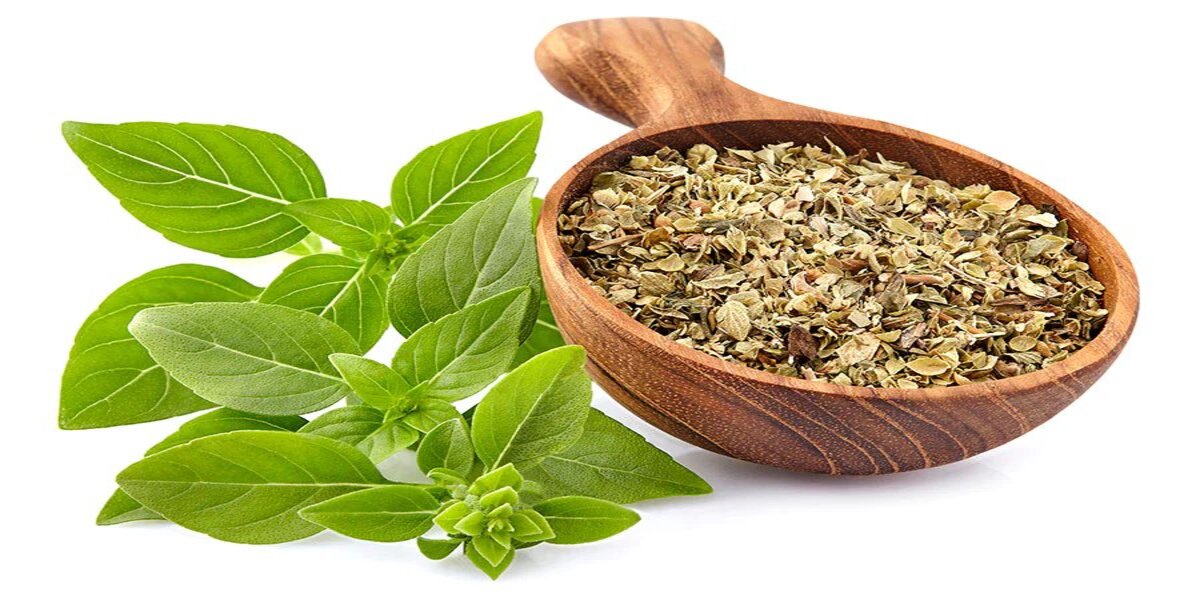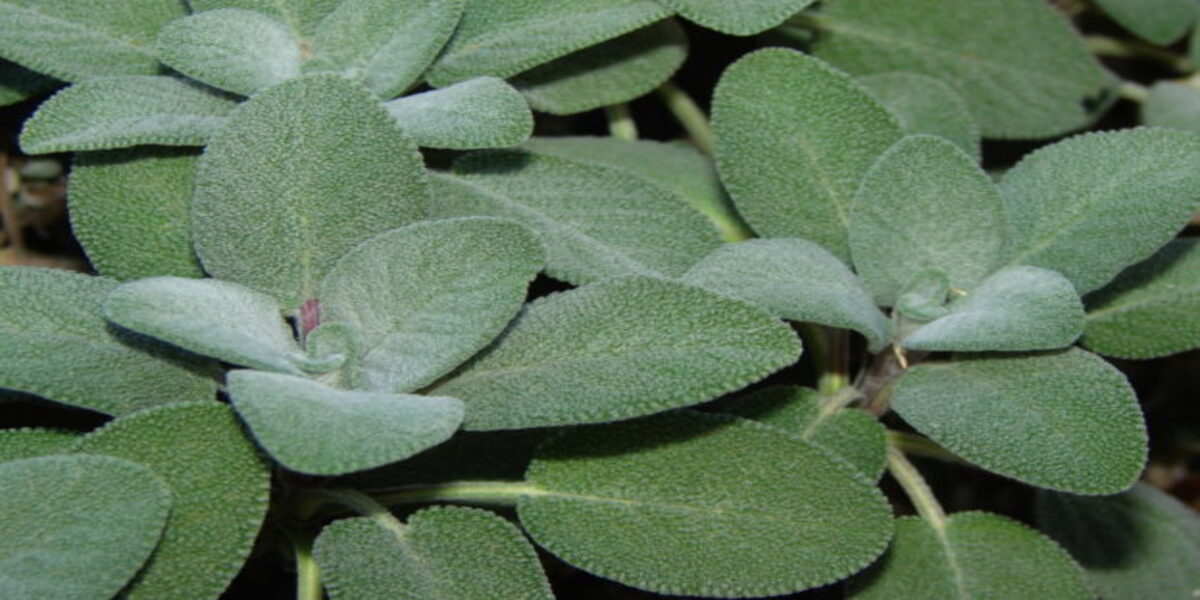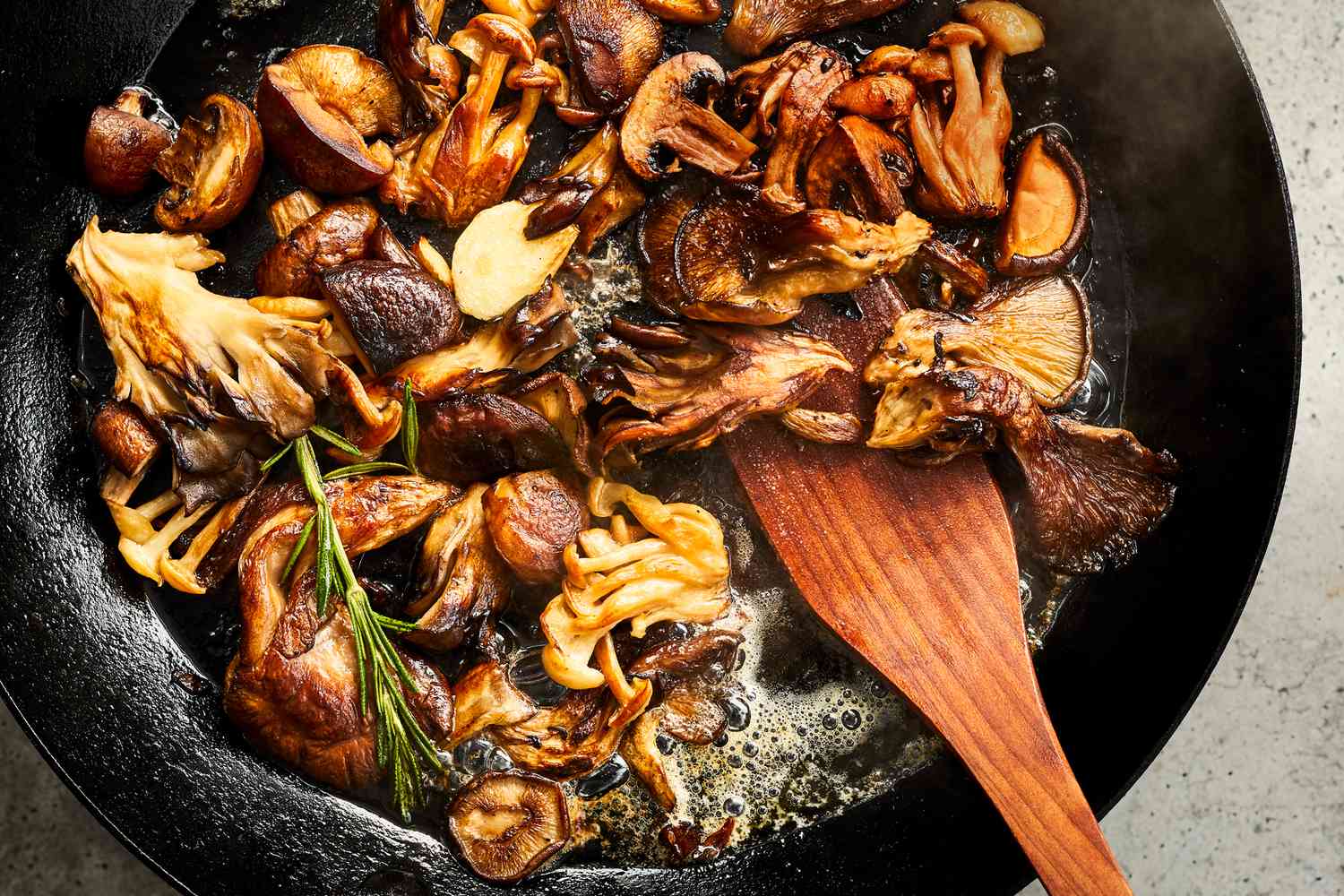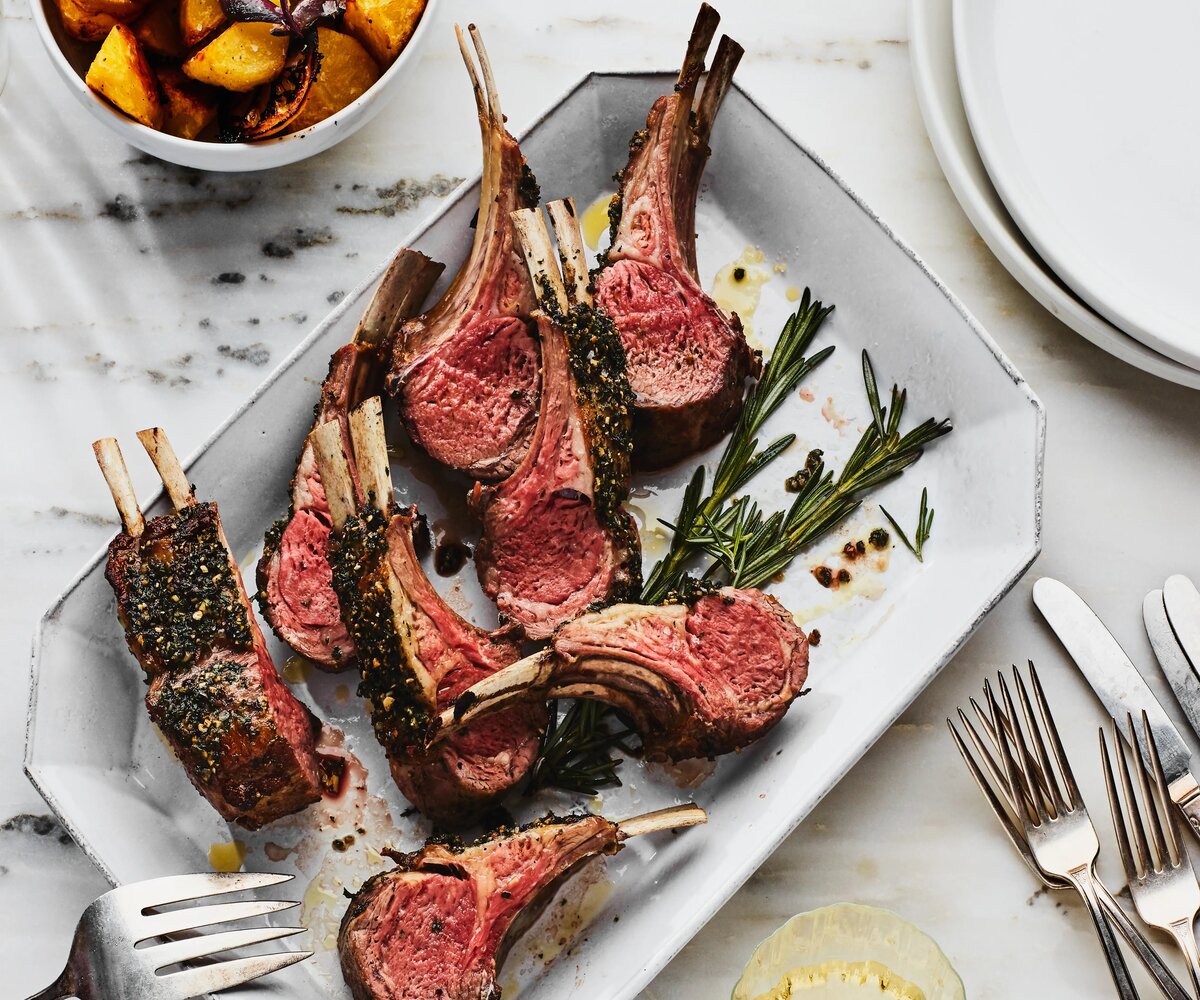Home>Gardening News and Trends>Gardening Trends>What Herbs Go In Beef Stew
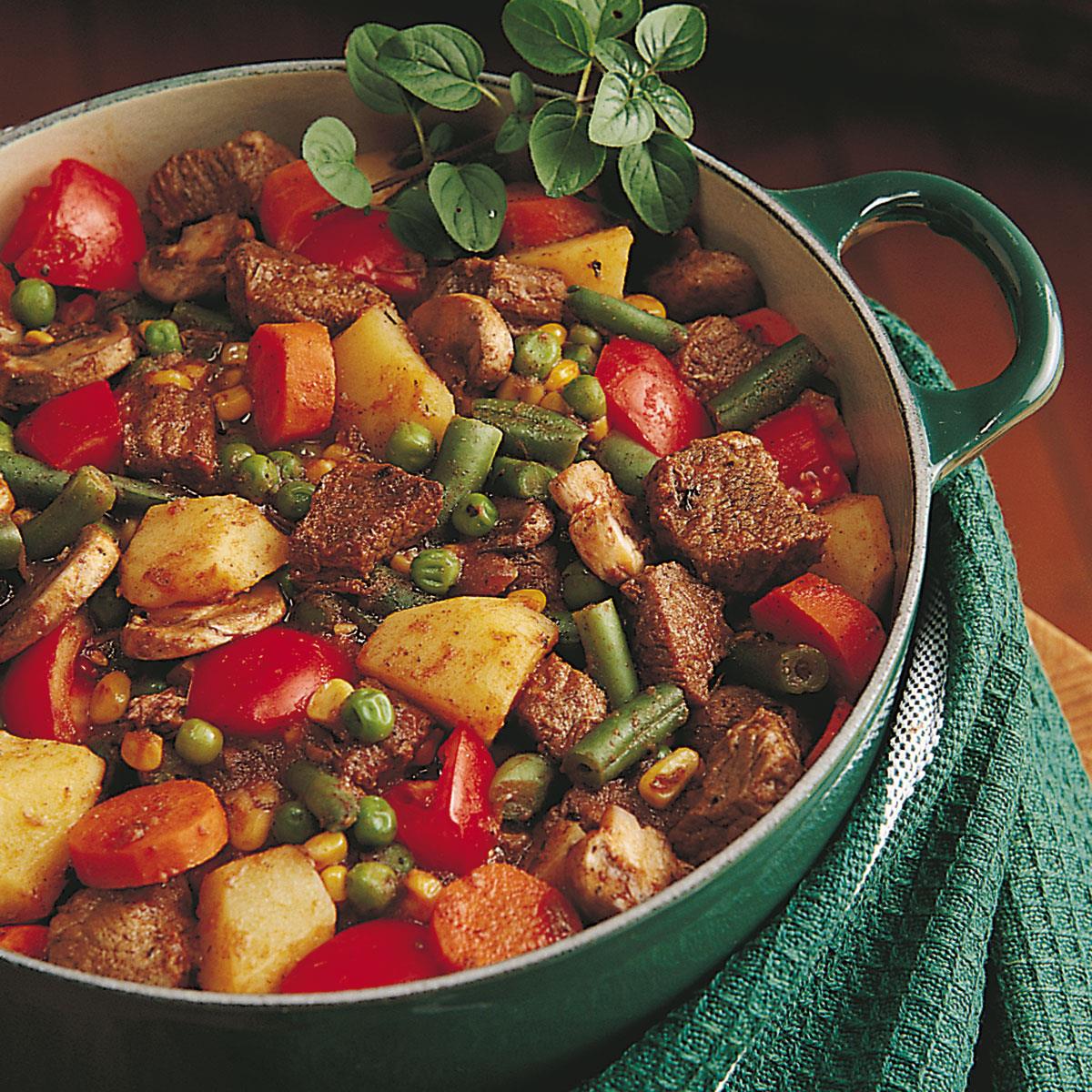

Gardening Trends
What Herbs Go In Beef Stew
Published: September 30, 2023
Discover the latest gardening trends for enhancing your beef stew with delicious herbs. Find out which herbs add incredible flavor to your homemade beef stew recipe.
(Many of the links in this article redirect to a specific reviewed product. Your purchase of these products through affiliate links helps to generate commission for Chicagolandgardening.com, at no extra cost. Learn more)
Table of Contents
Introduction
When it comes to creating a hearty and flavorful beef stew, herbs play a crucial role in enhancing the taste and aroma of the dish. The right combination of herbs can transform a simple stew into a culinary masterpiece, infusing it with an array of delightful flavors and aromas.
Choosing the right herbs for your beef stew can be an exciting and creative process. Whether you opt for the classic combination of rosemary and thyme or experiment with unique herb blends, each herb brings its own unique characteristics that contribute to the overall taste profile of the stew.
In this article, we will explore the world of herbs and discover which ones go best with beef stew. We will delve into the flavor profiles of common herbs used in stew recipes, discuss their individual benefits, and learn how to balance and combine them for the perfect flavor harmony. So, if you’re ready to take your beef stew to the next level, let’s dive into the world of aromatic herbs and spices!
Choosing the Right Herbs for Beef Stew
When choosing herbs for beef stew, it’s important to consider the flavor profile you want to achieve. Are you going for a robust and earthy taste, or do you prefer a more delicate and fragrant stew? The choice of herbs will depend on personal preference and the specific flavors you want to bring out in your stew.
One approach is to match the herbs with the other ingredients in the stew. For example, if you’re using rich beef, you may want to complement it with stronger herbs like rosemary and thyme. On the other hand, if you have a lighter broth base or want to highlight the natural sweetness of the vegetables, you might opt for herbs like parsley and dill.
Another factor to consider is the cooking time of the herbs. Some herbs, like rosemary and thyme, can withstand long cooking times and maintain their flavor. Others, such as parsley and basil, are more delicate and should be added towards the end of the cooking process to preserve their freshness.
Additionally, it’s essential to strike a balance between the herbs you choose. You want to avoid overwhelming the dish with too many strong flavors or using herbs that clash with each other. A good rule of thumb is to stick to a few key herbs that complement each other well and enhance the overall flavor of the stew.
Experimentation is key when it comes to choosing herbs for your beef stew. Don’t be afraid to try different combinations and adjust the amounts to find the perfect balance of flavors. It’s all about discovering what works best for your taste buds and creating a stew that delights your senses.
Common Herbs Used in Beef Stew
When it comes to beef stew, there are several herbs that are commonly used to add depth and flavor to the dish. Each herb brings a unique set of flavors and aromas, enhancing the overall taste profile of the stew. Let’s explore some of the most popular herbs used in beef stew recipes:
- Rosemary: Rosemary is known for its strong and distinct flavor. It pairs well with beef and adds an earthy, pine-like aroma to the stew. Adding a sprig of rosemary during the cooking process infuses the stew with a fragrant and savory taste.
- Thyme: Thyme is a versatile herb that pairs well with a wide range of ingredients. Its woody and slightly minty flavor adds complexity to the stew. Whether using fresh or dried thyme, it enhances the savory notes of the beef and complements other herbs.
- Bay Leaves: Bay leaves are aromatic and impart a subtle floral flavor to the stew. They are often added during the cooking process and removed before serving. Bay leaves add a layer of depth to the stew, enhancing the overall flavor profile.
- Parsley: Parsley is a versatile herb that can be used as a garnish or added during cooking. It has a fresh and slightly peppery taste that adds brightness to the stew. Parsley works well with other herbs and complements the flavors of the beef and vegetables.
- Sage: Sage has a strong and distinct flavor that pairs exceptionally well with beef. Its earthy and slightly bitter taste adds depth and complexity to the stew. Use sage sparingly as its flavor can be overpowering if used in large quantities.
- Oregano: Oregano is a popular herb in Mediterranean cuisine and adds a bold and aromatic flavor to beef stew. It has a slightly bitter and peppery taste that complements the hearty flavors of the beef and vegetables.
- Marjoram: Marjoram has a similar flavor profile to oregano but is milder and sweeter. It adds a delicate and aromatic taste to the stew, enhancing the overall flavor profile without overpowering the other ingredients.
- Tarragon: Tarragon has a unique anise-like flavor that pairs well with beef. Its subtle sweetness adds a hint of sophistication to the stew. Use tarragon sparingly as its flavor can be quite strong.
- Dill: Dill is a delicate herb with a fresh and slightly tangy flavor. While it’s not typically a herb used in beef stew, it can add a refreshing twist if you’re looking for a lighter-tasting stew. Add dill towards the end of the cooking process to preserve its vibrant flavor.
These are just a few examples of the herbs commonly used in beef stew recipes. Feel free to experiment with different combinations and herb profiles to create a stew that suits your taste preferences. Remember to adjust the amounts according to your personal taste and enjoy the flavorful journey!
Rosemary
Rosemary is a highly aromatic herb that is often used in beef stew recipes to add a robust and earthy flavor. It is known for its needle-like leaves and distinct aroma, which are reminiscent of pine and citrus. When used in beef stew, rosemary enhances the natural richness of the meat and elevates the overall taste profile.
One of the main reasons rosemary is popular in beef stew is its ability to withstand long cooking times without losing its flavor. Whether you’re simmering your stew on the stovetop or slow-cooking it in a crockpot, rosemary infuses the dish with its aromatic essence, making each spoonful a delightful experience.
When adding rosemary to beef stew, you have a couple of options. One method is to add whole sprigs of rosemary to the stew, allowing the leaves to simmer and release their flavor. Another option is to finely chop the rosemary leaves and mix them evenly throughout the stew, ensuring that the herb is well-distributed.
It’s important to note that rosemary can be quite potent, so a little goes a long way. Start with a small amount and taste the stew as it cooks to determine if you need to add more. Remember, you can always add more rosemary, but it’s difficult to remove the flavor if you’ve added too much.
In addition to its flavor-enhancing properties, rosemary also offers several health benefits. It contains antioxidants that can help reduce inflammation in the body and boost immune function. Rosemary is also believed to improve digestion and promote healthy brain function.
When using rosemary in beef stew, it pairs well with other herbs like thyme and bay leaves, creating a harmonious blend of flavors. The combination of rosemary’s earthiness, thyme’s herbal notes, and the subtle floral taste of bay leaves adds depth and complexity to the stew.
Whether you’re cooking a traditional beef stew or experimenting with unique flavor profiles, rosemary is a versatile herb that can elevate your dish to new heights. So, don’t hesitate to incorporate a sprig or two of rosemary in your next batch of beef stew and savor the aromatic delight it brings.
Thyme
Thyme is a versatile herb that’s commonly used in beef stew recipes to add a depth of flavor and a subtle herbal aroma. With its fragrant and earthy taste, thyme enhances the savory notes of the beef and complements the other ingredients in the stew.
One of the advantages of using thyme in beef stew is its ability to withstand long cooking times without losing its flavor. Whether you’re simmering the stew on the stovetop or slow-cooking it in a crockpot, thyme infuses the dish with its distinct taste, enhancing the overall flavor profile.
Thyme is available in both fresh and dried forms, and both can be used in beef stew. However, it’s important to note that fresh thyme has a more pronounced flavor, while dried thyme is more concentrated. If you’re using dried thyme, remember to use it sparingly, as its potency is higher than that of fresh thyme.
To incorporate thyme into your beef stew, you can either add whole sprigs of fresh thyme or sprinkle dried thyme directly into the pot. If using fresh thyme sprigs, you can leave them in the stew while it cooks and remove them before serving. If using dried thyme, simply mix it in with the other ingredients.
Along with its flavor-enhancing properties, thyme offers several health benefits. It contains antioxidants that can help boost the immune system and protect against oxidative stress. Thyme is also believed to have antimicrobial properties and may aid in digestion.
Thyme pairs well with other herbs commonly used in beef stew, such as rosemary and bay leaves. The combination of thyme’s herbal notes, rosemary’s earthiness, and the subtle floral taste of bay leaves creates a harmonious blend of flavors.
When using thyme in beef stew, it’s best to add it early on in the cooking process to allow its flavors to marry with the other ingredients. This will ensure that the thyme permeates the stew, infusing it with its aromatic essence.
Whether you’re making a classic beef stew or experimenting with new flavor combinations, adding thyme can elevate the taste profile of your dish. So, don’t hesitate to incorporate this versatile herb and savor the delightful flavors it brings to your beef stew.
Bay Leaves
Bay leaves are a commonly used herb in beef stew recipes, known for their aromatic qualities and subtle floral flavor. These leaves add depth and complexity to the stew, enhancing the overall taste profile.
When using bay leaves in beef stew, it’s important to remember that they are not meant to be eaten and should be removed before serving. This herb is typically added to the stew during the cooking process to allow its flavors to infuse into the dish.
Bay leaves have a unique flavor that is difficult to describe. They impart a slightly bitter and herbal taste, which contributes to the complexity of the stew. While the flavor of bay leaves is not overpowering, it enhances the overall depth of the dish and adds a subtle floral note.
To use bay leaves in beef stew, simply add one or two leaves to the pot while it’s cooking. The leaves can be left whole or lightly crushed to release their aromatic oils. Remember to remove the bay leaves before serving, as they can present a choking hazard if ingested.
Aside from their flavor-enhancing properties, bay leaves offer other benefits. They are believed to have antimicrobial properties and can aid in digestion. Bay leaves also contain compounds that may help regulate blood sugar levels and reduce inflammation.
Bay leaves pair well with other herbs commonly used in beef stew, such as rosemary and thyme. The combination of bay leaves’ subtle floral taste, the earthiness of rosemary, and the herbal notes of thyme creates a delightful blend of flavors that elevate the stew.
When using bay leaves in beef stew, it’s best to use them sparingly. A little goes a long way, and too many bay leaves can overpower the other flavors in the dish. Aim for a balance where the bay leaves add complexity without dominating the overall taste.
Whether you’re making a traditional beef stew or trying out a new recipe, adding bay leaves can bring a subtle yet essential flavor to your dish. So, don’t forget to include these aromatic leaves in your next batch of beef stew and enjoy the depth they bring to every spoonful.
Parsley
Parsley is a versatile and vibrant herb that can be used in various dishes, including beef stew. While it is often used as a garnish, parsley also adds a fresh and slightly peppery taste when incorporated into the stew itself.
There are two main types of parsley: curly leaf parsley and flat-leaf (Italian) parsley. Flat-leaf parsley is more commonly used in cooking and provides a stronger flavor compared to its curly counterpart.
When using parsley in beef stew, it is best to add it towards the end of the cooking process to preserve its freshness and vibrant green color. Just before serving, finely chop a handful of parsley leaves and sprinkle them over the stew. The parsley will not only add a pop of freshness but also enhance the overall visual appeal of the dish.
Parsley not only contributes its unique flavor to beef stew but also offers numerous health benefits. It is rich in vitamins A, C, and K, as well as minerals like iron and potassium. Parsley is known to have antioxidant properties and may aid in digestion and promote healthy kidney function.
In terms of flavor, parsley brings a bright and slightly peppery taste to the stew. It complements the robustness of the beef and adds a refreshing note to the overall flavor profile. The combination of parsley with other herbs like thyme or rosemary can create a harmonious blend of flavors that elevates the taste of the stew.
When using parsley in beef stew, it is essential to use the leaves rather than the stems. The stems have a more bitter taste and are less desirable for culinary use. After washing the parsley thoroughly, remove the leaves from the stems and discard the stems or use them for other purposes.
Whether you prefer the delicate flavor of flat-leaf parsley or the curly variety, adding parsley to your beef stew will provide a burst of freshness and a touch of pepperiness. So, don’t forget to include this versatile herb in your next batch of beef stew and enjoy the bright flavors it brings to your dish.
Sage
Sage is an herb that is often associated with dishes like poultry and stuffing, but it can also be a fantastic addition to beef stew. With its distinct flavor and aroma, sage adds a layer of complexity and earthiness to the stew, making it a delight for the taste buds.
Sage has a strong and distinct flavor profile, with hints of pine and citrus. When using sage in beef stew, it is important to use it sparingly, as its flavor can be quite potent. A little bit goes a long way in enhancing the overall taste of the dish.
There are different varieties of sage, but common sage (Salvia officinalis) is the most widely used in cooking. Dry sage leaves are often used in beef stew recipes, but fresh sage leaves can also be used to bring a more intense flavor to the dish.
To incorporate sage into beef stew, you can either add whole sage leaves or finely chop them before adding them to the pot. Sage pairs well with other herbs like rosemary and thyme, creating a harmonious blend of flavors that enhances the overall taste of the stew.
Be mindful when using sage in beef stew, as its potent flavor can easily overpower other ingredients. It’s best to start with a small amount and taste the stew as it cooks, adjusting the amount of sage according to your preference.
Aside from its flavorful qualities, sage also offers potential health benefits. It contains compounds that have antimicrobial and anti-inflammatory properties, and it may also support digestion and memory function.
When using sage in beef stew, it is important to remember that the flavor intensifies over time. The longer the sage leaves are cooked, the stronger the flavor will become. If you prefer a milder sage taste, you can add the leaves towards the end of the cooking process.
Whether you’re making a classic beef stew or experimenting with new flavor combinations, sage can bring a unique and earthy taste to your dish. Don’t be afraid to play around with the amount of sage and other herbs to find the perfect balance that suits your taste buds.
Oregano
Oregano is a popular herb in Mediterranean cuisine and can bring a burst of flavor to your beef stew. Its bold and aromatic taste adds a distinct herbal note and complexity to the dish, making it a favorite choice for many home cooks.
When using oregano in beef stew, you have the option of using either fresh or dried oregano. Both versions add a unique flavor, but dried oregano is more concentrated, so you may need to use less of it compared to fresh oregano.
Oregano pairs well with the robust flavors of beef and enhances the overall taste profile of the stew. The herb offers a slightly bitter and peppery taste with hints of citrus and pine, making it a versatile ingredient in a variety of dishes.
To incorporate oregano into your beef stew, you can add it early on during the cooking process to allow its flavors to infuse into the stew. Whether using dried or fresh oregano, it’s best to add it at the beginning to ensure that the flavors meld seamlessly.
Aside from its flavor-enhancing properties, oregano offers potential health benefits. It contains antioxidants known for their anti-inflammatory properties and may have antimicrobial effects. Oregano is also a good source of vitamins and minerals that support overall health.
When using oregano in beef stew, it pairs well with other herbs commonly used in Mediterranean cuisine, such as basil and thyme. The combination of oregano’s bold taste with the herbal notes of other herbs can create a flavorful and aromatic stew.
Remember to taste the stew as it cooks and adjust the amount of oregano to suit your preferences. If you prefer a milder oregano flavor, start with a small amount and add more if desired. It’s always easier to add more oregano, but difficult to reduce its flavor once it’s been added in excess.
Whether you’re making a classic beef stew or a variation with Mediterranean influences, oregano can elevate the taste profile of your dish. Don’t hesitate to experiment with different amounts and combinations of herbs to find the perfect balance that satisfies your palate.
Marjoram
Marjoram is an herb closely related to oregano and is known for its delicate, sweet, and floral flavor. While it may not be as commonly used in beef stew as some other herbs, it can bring a unique and delightful taste to the dish.
Marjoram is available in both fresh and dried forms, and both can be used in beef stew. However, it’s important to note that dried marjoram is more potent, so you may need to use less of it compared to fresh marjoram.
The flavor of marjoram is milder and more subtle than oregano, making it a wonderful choice for those who prefer a less overpowering herb. It adds a gentle herbal note to the stew and complements the flavors of other ingredients without overwhelming them.
To incorporate marjoram into your beef stew, you can add it early on during the cooking process. This allows the flavors to infuse into the stew and creates a harmonious blend of taste. Whether using fresh or dried marjoram, adding it at the beginning ensures that its aroma and flavor permeate the entire dish.
Marjoram not only enhances the flavor of the stew but also offers potential health benefits. It contains antioxidants known for their anti-inflammatory properties and may have antimicrobial effects. Marjoram may also support digestion and promote overall well-being.
When using marjoram in beef stew, it pairs well with other herbs like thyme, rosemary, and oregano. The combination of marjoram’s delicate and sweet flavor with the aromatic profile of these herbs creates a delightful gastronomic experience.
As with any herb, it’s important to taste the stew as it cooks and adjust the amount of marjoram according to your preference. Start with a small quantity and add more if desired, keeping in mind that marjoram has a subtler flavor compared to other herbs.
Whether you’re making a classic beef stew or experimenting with new flavor combinations, don’t hesitate to incorporate marjoram. Its gentle and floral taste can add a unique dimension to your dish, making it a memorable culinary experience.
Tarragon
Tarragon is a flavorful herb that can bring a touch of sophistication to your beef stew. With its distinct anise-like flavor, tarragon adds a unique and subtle sweetness to the dish.
French tarragon is the most commonly used variety in cooking due to its intense flavor and aroma. It is best to use fresh tarragon in beef stew to fully capture its delicate taste, as the flavor of dried tarragon may not be as pronounced.
When using tarragon in beef stew, it’s important to use it sparingly as its flavor can be quite strong. Start with a small amount and taste the stew as it cooks, adjusting the quantity to your preference.
Tarragon pairs well with beef and other herbs commonly used in stews, such as thyme and parsley. The combination of tarragon’s subtle sweetness with the herbal notes of other herbs creates a balanced and complex flavor profile in the stew.
To incorporate tarragon into your beef stew, add it towards the end of the cooking process. This will help to maintain its vibrant flavor and prevent it from becoming too overpowering. Finely chop the tarragon leaves and sprinkle them over the stew, or add whole sprigs and remove them before serving.
In addition to its flavor-enhancing properties, tarragon offers potential health benefits. It contains antioxidants and may have anti-inflammatory effects. Tarragon is also known to aid digestion and promote appetite stimulation.
Whether you’re making a classic beef stew or experimenting with new flavor combinations, don’t hesitate to include tarragon. Its unique and slightly sweet taste can elevate the taste profile of your stew, making it an elegant and memorable dish.
Dill
While dill is not a herb commonly associated with beef stew, it can bring a refreshing and unexpected twist to the dish. With its unique flavor profile, dill adds a touch of brightness and a subtle tang to the stew.
Dill is often used in dishes with fish and seafood, but it can also complement the flavors of beef. The herb has a distinctive taste that is both herbaceous and slightly sweet with a hint of anise flavor.
When using dill in beef stew, it’s best to add it towards the end of the cooking process. This helps to preserve its fresh and delicate flavor while infusing the stew with its vibrant essence.
To incorporate dill into your beef stew, finely chop the leaves and sprinkle them over the stew. Alternatively, you can leave some sprigs whole or tie them together and remove them before serving.
Dill pairs well with other herbs like parsley and chives, adding complexity and depth to the stew’s flavor profile. The combination of dill with these herbs creates a harmonious blend of taste that brings out the best in the beef and other ingredients.
In addition to its flavor benefits, dill also offers potential health advantages. It is a good source of vitamins and minerals, such as vitamin C and iron. Dill is also known for its antimicrobial and antioxidant properties, which can support overall well-being.
While dill may not be the most traditional herb used in beef stew, don’t be afraid to experiment with it. Its fresh and tangy taste can add a delightful twist to your stew, transforming it into a unique and memorable culinary experience.
Balance and Combinations
Creating a harmonious balance of flavors is essential when using herbs in beef stew. The combination of different herbs can elevate the taste profile of the dish and create a depth of flavors that is both satisfying and memorable.
When choosing herbs for your beef stew, consider the overall flavor profile you want to achieve. Are you looking for a robust and earthy stew, or do you prefer a more delicate and fragrant combination of flavors? The choice of herbs will depend on your personal preference and the specific taste you want to bring out in the stew.
It’s important to strike a balance between the herbs you choose, ensuring that no single herb overpowers the others. Too many strong-flavored herbs can overwhelm the dish, while using herbs that clash with each other can create an unappealing taste.
One approach to achieving balance is to choose a few key herbs that complement each other well. For example, the classic combination of rosemary and thyme brings an earthy and herbal taste to the stew. Adding parsley can provide a bright and slightly peppery note, while sage or marjoram can contribute to the complexity and depth of flavors.
It’s also important to consider the cooking time of herbs. Some herbs, like rosemary and thyme, can withstand long cooking times and maintain their flavor. Others, such as parsley and dill, are more delicate and are best added towards the end of the cooking process.
Experimentation is key when it comes to finding the right balance and combination of herbs in your beef stew. Start with smaller amounts of each herb and taste the stew as it cooks. This allows you to adjust the flavors as needed and ensure that the herbs are enhancing the overall taste rather than overpowering it.
Remember, the goal is to create a well-rounded and delicious beef stew where each herb contributes its unique flavor without dominating the dish. By carefully selecting and combining herbs, you can create a truly memorable culinary experience that delights the palate.
Tips for Adding Herbs to Beef Stew
Adding herbs to beef stew can elevate the taste and take it to a whole new level. Here are some tips to make the most out of the herbs when preparing your stew:
- Choose fresh herbs when possible: Fresh herbs have a vibrant flavor that can enhance the stew’s taste. If fresh herbs aren’t available, dried herbs can still add delicious flavors.
- Experiment with different combinations: Have fun and try different herb combinations to create unique flavors. Rosemary and thyme are popular choices, but don’t be afraid to think outside the box and pair your favorite herbs together.
- Consider the cooking time: Some herbs, like rosemary and thyme, can withstand long cooking times without losing their flavors. Others, such as parsley and dill, are more delicate and should be added towards the end of the cooking process to preserve their freshness.
- Start with small amounts: It’s easier to add more herbs later if needed, so start with a small amount and taste the stew as it cooks. This allows you to adjust the flavors according to your preference.
- Remove herbs before serving: Unless you’re using herbs as a garnish, remember to remove large herb sprigs or stems before serving the stew. This prevents any unpleasant woody textures or overpowering flavors.
- Crush dried herbs before adding: If you’re using dried herbs, crushing them between your fingers just before adding them to the stew can help release their flavors more effectively.
- Balance the flavors: Ensure a harmonious balance between all the herbs used. Avoid using too many strong-flavored herbs that may overpower the stew or clash with each other.
- Adjust herbs to the dish’s profile: Consider the other ingredients in your stew and adjust the herbs accordingly. Rich and hearty stews can handle stronger herbs, while lighter broths may benefit from milder herbs.
- Don’t forget about the garnish: Add a sprinkle of fresh herbs as a garnish before serving. This adds a pop of color and freshness to the dish, enhancing its visual appeal.
- Trust your taste buds: Everyone has different preferences, so trust your taste buds and adjust the herb quantities to suit your palate.
By following these tips, you can ensure that the herbs you add to your beef stew contribute to a delicious and aromatic dish that will impress your family and friends. So, have fun experimenting with different herb combinations and savor the flavors they bring!
Conclusion
When it comes to creating a flavorful and delightful beef stew, the addition of herbs is key. Whether you opt for the classic combination of rosemary and thyme or experiment with unique herb blends, each herb brings its own unique characteristics that contribute to the overall taste profile of the stew.
Choosing the right herbs for your beef stew involves considering the flavor profile you want to achieve and ensuring a balance between the herbs. From the robust and earthy taste of rosemary to the delicate freshness of parsley, each herb adds its own layer of complexity to the stew.
While some herbs can withstand long cooking times, others should be added towards the end to preserve their flavors. The combination of different herbs, such as rosemary, thyme, and bay leaves, can create a harmonious blend of aromas and tastes that enhance the overall enjoyment of the stew.
Experimentation is key when it comes to finding the perfect herb combinations to suit your taste buds. Start with small amounts, taste as you cook, and adjust the herbs accordingly. Don’t be afraid to get creative and try new combinations or even incorporate herbs not traditionally used in beef stew.
Remember, herbs not only enhance the flavor of the stew but also offer various health benefits. From their antioxidant properties to potential digestive support, herbs can contribute to your overall well-being.
So, the next time you’re preparing a batch of beef stew, embrace the opportunity to explore the wonderful world of herbs. Let your taste buds guide you as you choose the perfect combination to elevate the flavors, delight your senses, and create a truly memorable dining experience.
